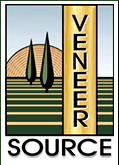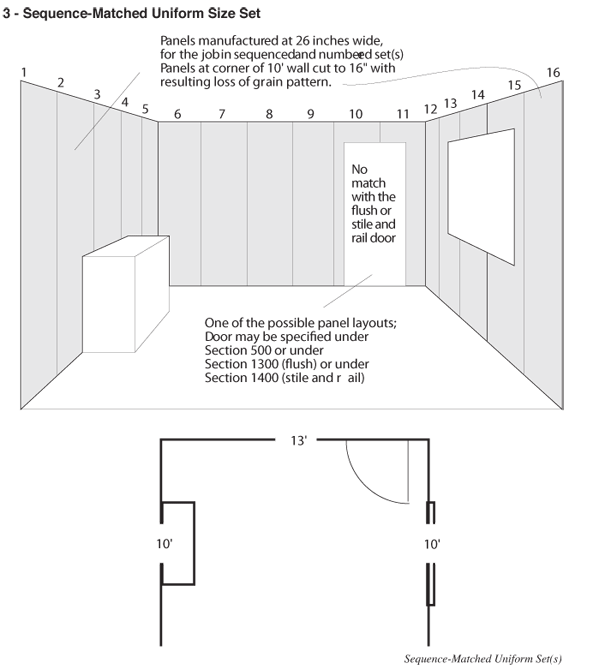







Veneered panels used in casework or paneling in the same area may be matched to each other. This important component of the project must be carefully detailed and specified. The natural growth patterns of the tree will cause the figure on the sequential panels to ascend, descend, or show a “grain progression” as the eye moves from panel to panel. These illustrations were developed in Imperial measure and have not been converted for this edition. The four common methods are:

These sets are manufactured for a specific installation to a uniform panel width and height. If more than one flitch is required to produce the required number of panels, similar flitches will be used. This type of panel matching is best used when panel layout is uninterrupted, and when the design permits the use of equal-width panels. Some sequence will be lost if trimming is required to meet field conditions. Doors and components within the wall cannot usually be matched to the panels. Moderate in cost, sequenced uniform panels offer a good compromise between price and æsthetics.
1 - Pre-manufactured Sets - Full Width
2 - Pre-manufactured Sets - Selectively Reduced in Width
4 - Blueprint-Matched Panels and Components
... that managed forests, thanks to their high proportion of young, strong, growing trees, enable CO2 to be extracted?
... that an old, unmanaged forest produces as much CO2 through processes of decomposition and decay as it stores, and that therefore an unmanaged forest contributes nothing to reducing global CO2?


Phone: 407-423-2252 • Fax: 407-423-1566 • sales@veneersource.com